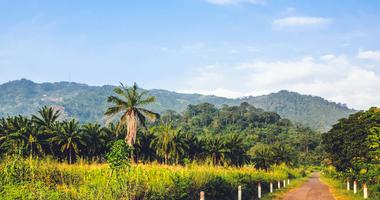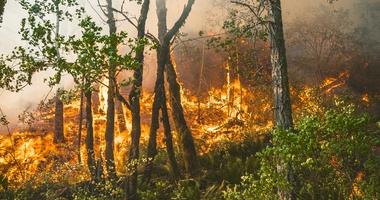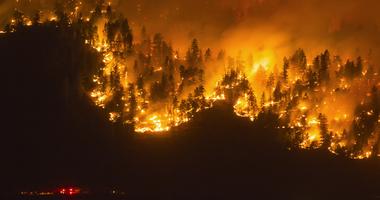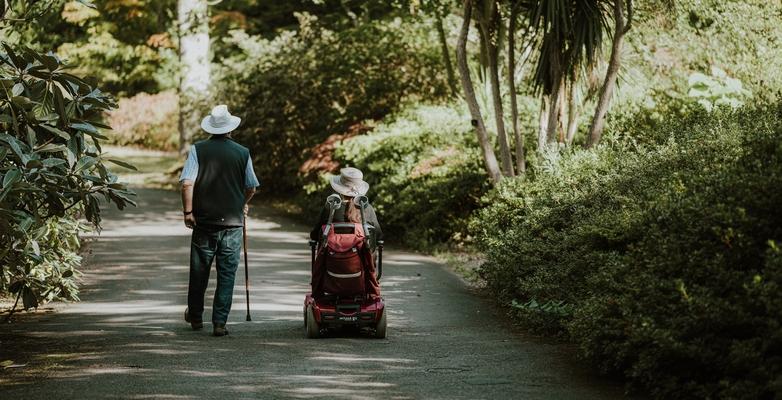
People With Disabilities Must Have a Seat at the Table in the Climate Movement
Disability rights are a climate justice issue and need to be treated as such.
How can you have a seat at the table if you can’t get in the door? This often comes to mind when I think about what it’s like living with a disability and the looming climate crisis.
Disability communities around the world are becoming increasingly vocal in calling attention to how they are disproportionally affected by climate change and the need to ensure that disabiality rights are respected, protected, and fulfilled in climate solutions. Living with a disability myself has made this very clear.
Since being diagnosed with Relapse Remitting Multiple Sclerosis in 2018, I have become increasingly aware of the disproportionate impact climate change has on the disability community and the need for more inclusive participation in the climate movement.
I first began thinking about the impact in the summer of 2020 during a heat wave in western Pennsylvania. People with MS suffer from heat intolerance and experience a temporary worsening of their symptoms when the weather is very hot or humid. These temporary changes can result from even a slight elevation in core body temperature, and this does have an impact on me. In fact, immersing someone in a hot bath to see if symptoms flared up used to be a way to test for MS.
It was the beginning of the COVID-19 pandemic, and I was in a clinical relapse at the time and unfortunately living in a home that only had air conditioning in one room. The warm temperatures made it extremely difficult for me to just live day to day. I was confined to the bedroom the majority of the time and would only briefly leave to use the bathroom or get something to eat.
My symptoms would flare up when I did. I wasn’t able to cook food, so I spent a good amount of money on delivery during a time when I had to take a leave of absence from work because of my health. I went to school for sustainability, had recently returned from an expedition to the Arctic that focused on climate education, and was taking part in Climate Reality’s first virtual training.
This made me wonder how other folks living with disabilities would prepare for the changing climate when I couldn’t with the education and resources to do so. Since that time, I have tried to spread awareness and learn as much about the topic as possible.
What I found out is disheartening and scary.
For example, at COP 26 in Glasgow, there was a push to include more marginalized voices including Indigenous voices, frontline communities, and youth activists, but there was one community that was woefully underrepresented and that was people living with disabilities. This was on full display when Israeli Energy Minister Karine Elharrar was unable to participate in the first full day because there was no wheelchair access.
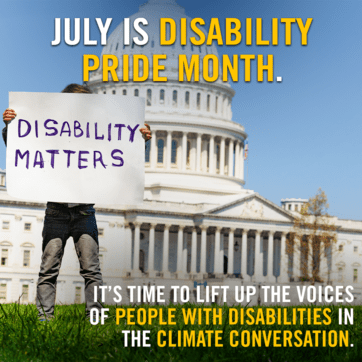
Again, how can we have a seat at the table if we can’t get in the door? Disability rights are a climate justice issue and need to be treated as such.
We need a seat at the table when decisions are made regarding climate change. Why would you not want a group of people who have spent their lives adapting to a world that wasn’t built for them? Not including disabled voices in the climate movement not only has a negative impact on the disability community but everyone else because you are missing out on knowledge and wisdom from experts in adapting. This exclusion has led to huge disparities for people living with disabilities when disasters strike.
The majority of disabled people who are evacuated during a disaster never make it home. Evacuation often leads to people being permanently institutionalized and facing a cascade of other problems. For example, 59% of deaf evacuees reported they never went back, according to recent US Census data.
Not only do disabled people have issues making it home, but they also experience other problems at rates that were five to 10 times higher than people without disabilities.
“For example, 70% of deaf people who were evacuated reported living in unsanitary conditions a month after the disaster. More than 74% of evacuees who are unable to walk reported experiencing a lack of food one month after a disaster,” according to E&E News. “By contrast, just 9% of people who can walk faced a food shortage, Census figures show. Only 7% of evacuees with good hearing were in unsanitary conditions.”
There are steps being taken to address some of these issues.
An example of inclusion in this space is Sherman Gillums Jr., who is in a wheelchair and serves as FEMA’s disability coordinator and the director of its Office of Disability Integration and Coordination. He advises the agency on ensuring FEMA’s commitment to equity in emergency management for people with disabilities, including older adults and others with access and functional needs. Another example is a program in California that trains in-home caregivers to be first responders in climate-related disasters.
Although there is progress and more awareness around the intersection of living with a disability and climate crisis, I believe there is still a long way to go.


